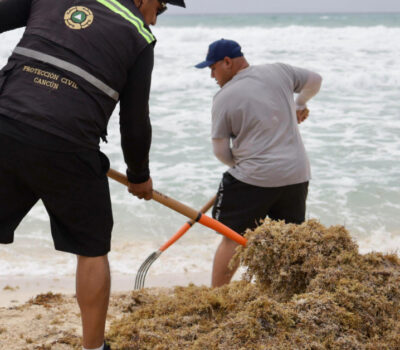Although they are considered the safest spaces, homes are the places with the highest number of pathogenic microorganisms that are identified as responsible for 50 to 80 percent of diarrheal and respiratory diseases of Mexican families.
Scientific studies of the National Laboratory for Research in Food Safety, Center for Research in Food and Development (CIAD), revealed that beyond public places, houses, offices and schools, are prone to the proliferation of infections.
With more than five years of research work, the specialists conducted laboratory tests and reported that the kitchen, rather than a bathroom, is the place where the microorganisms concentrate the most and, therefore, where proliferation is most susceptible of infections.
Cristóbal Chaidez Quiroz, coordinator at the laboratory, explained that the preparation of food is a process associated with contamination. Although there are extreme measures of cleaning, there are actions that are commonly carried out that are “cultivation broths.”
He added that in addition to kitchen utensils, the objects with the highest number of pathogenic bacteria are keys and door knobs, as well as the telephone handset and the television remote.
For example, he referred to the traditional use of a container to prepare soap, showing leftover fiber from the cloth or sponge used to wash dishes. What is being generated, he explained, is cross-contamination, because the food waste remains in the water and expands each time the cloth or sponge is used.
He said that on average a sponge contains 7.2 million bacteria, which remain in the containers used to prepare and serve food. He stressed that to avoid this degree of contamination, it would be sufficient to add two drops of concentrated chlorine in 250 milliliters of water for five minutes, and then immerse the sponge or cloth in this mixture.
In addition, he considered it necessary to “sterilize” the scrubber (provided it is not made of aluminum) by putting it in the oven for two minutes, as well as replacing it every two or three weeks.
The researcher and his team also found that the utensils that most contain pathogenic bacteria in the kitchen are rags and cutting boards, whether wood or plastic.
On the latter, he suggested having more than one cutting board, and assigning each one for each food group, that is, for meat, fruit and vegetables. In addition, he emphasized, it is necessary to wash and brush them with hot water without the need to use chlorine, because it is inactive with wood.
Chaidez Quiroz said that it is necessary to wash fruits and vegetables for at least thirty seconds, as well as brush those of rough skin such as melons, lettuce and all leafy vegetables, and wash each leaf separately with chlorine or deinfectant.
To avoid the dispersion of bacteria, the refrigerator, another indispensable element in cooking, should be kept at a temperature between 4 and 5 degrees Celsius, as well as cleaned and disinfected twice a week. Chlorine-based products and products based on citrus extracts are recommended.
Viruses survive more than 24 hours in objects and hands, and it is estimated that seven out of 10 people who have a viral infection have the virus in their hands.
When a person coughs or sneezes, they expel saliva drops at a distance of one meter; Air and particles are shipped at a speed of more than 120 kilometers per hour and expand on surfaces.
The CIAD expert, public research center of the National Council of Science and Technology (CONACYT), recalled that gastrointestinal diseases are a global problem associated with the contamination of food during its preparation.
During the handling of contaminated food, pathogenic microorganisms such as Staphylococcus, Salmonella, Hepatitis A virus and Norovirus can be distributed to the hands and contact surfaces, as well as in the utensils used for their preparation.
“During the course of our lives we coexist daily not only with thousands, but with millions of diverse microbial groups that swarm in the kitchen, in the bathroom of the home, in the desks of the school, as well as in the desk and keyboard of the computer from the office,” he said.
The expert suggested cleaning and disinfecting the spaces of the home frequently, the space of greater family coexistence.
Although they are considered the safest spaces, homes are the places with the highest number of pathogenic microorganisms that are identified as responsible for 50 . . .












